¤ 10 minutes Read
Jammu & Kashmir
Breathtaking region in northern India, known for its majestic mountains, serene valleys, and rich cultural heritage.
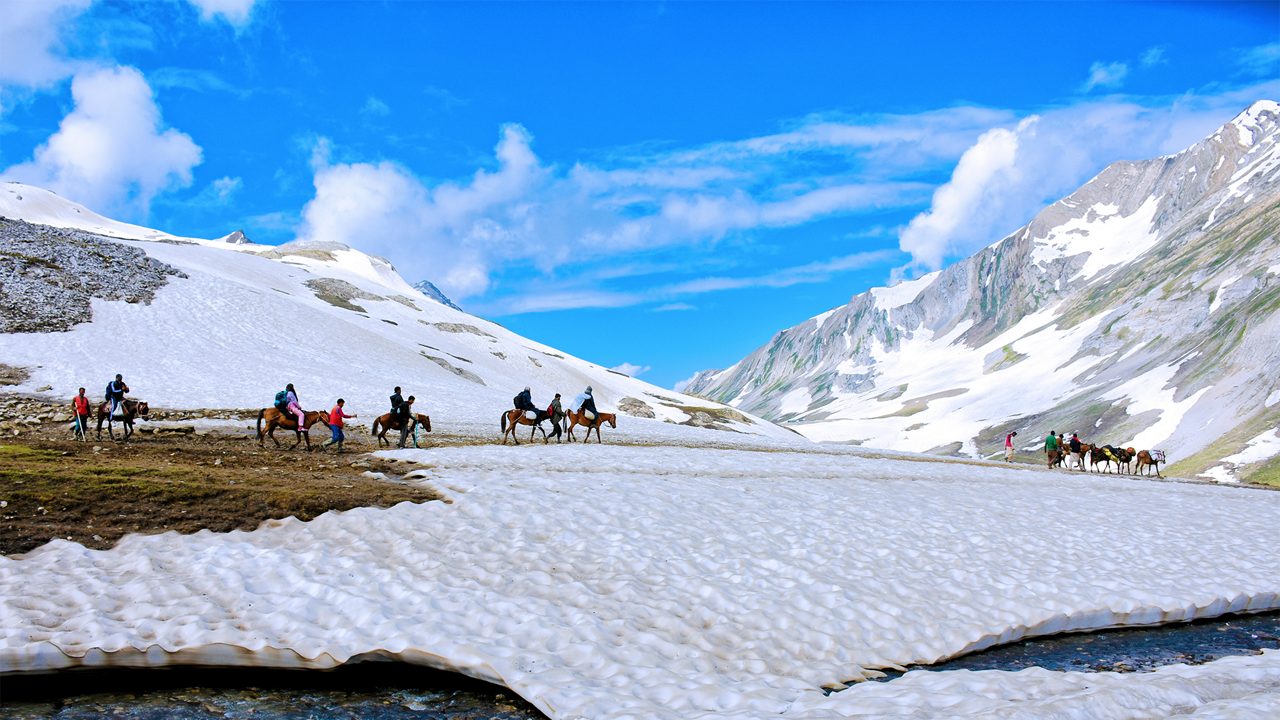
Jammu & Kashmir, often referred to as “Paradise on Earth,” is a stunning region in northern India renowned for its breathtaking landscapes, snow-capped mountains, tranquil lakes, and lush valleys.With a rich blend of cultures, traditions, and cuisines, the region offers both spiritual and adventure experiences—from peaceful houseboat stays on Dal Lake to thrilling skiing in Gulmarg.
Must-Visit Attractions in Jammu & Kashmir
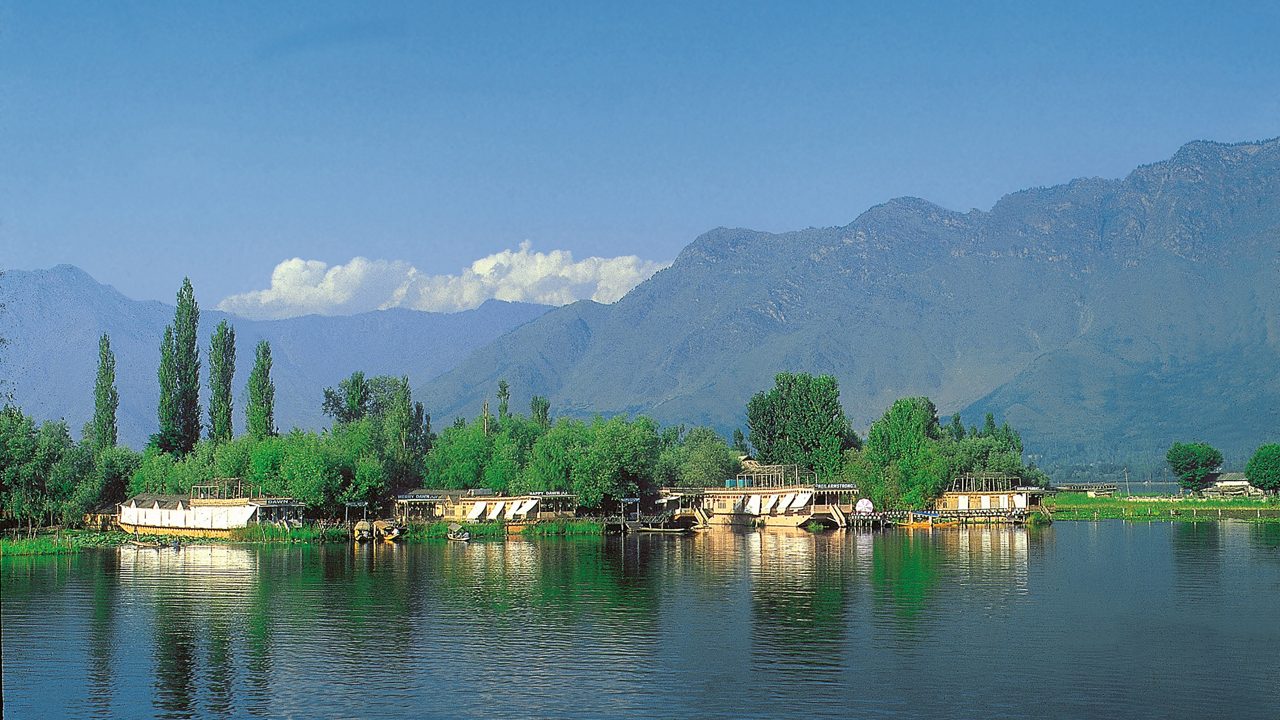
Dal Lake, Srinagar
Famous for its houseboats and shikaras, Dal Lake is the heart of Srinagar’s beauty and charm. It’s perfect for peaceful rides and stunning mountain views.

Gulmarg
A ski resort town surrounded by snowy peaks and pine forests, Gulmarg offers winter sports and the famous Gulmarg Gondola ride.
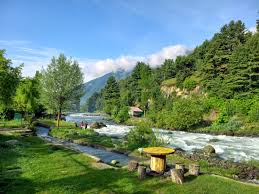
Pahalgam
Known for its lush valleys and Lidder River, Pahalgam is ideal for nature walks, pony rides, and camping.
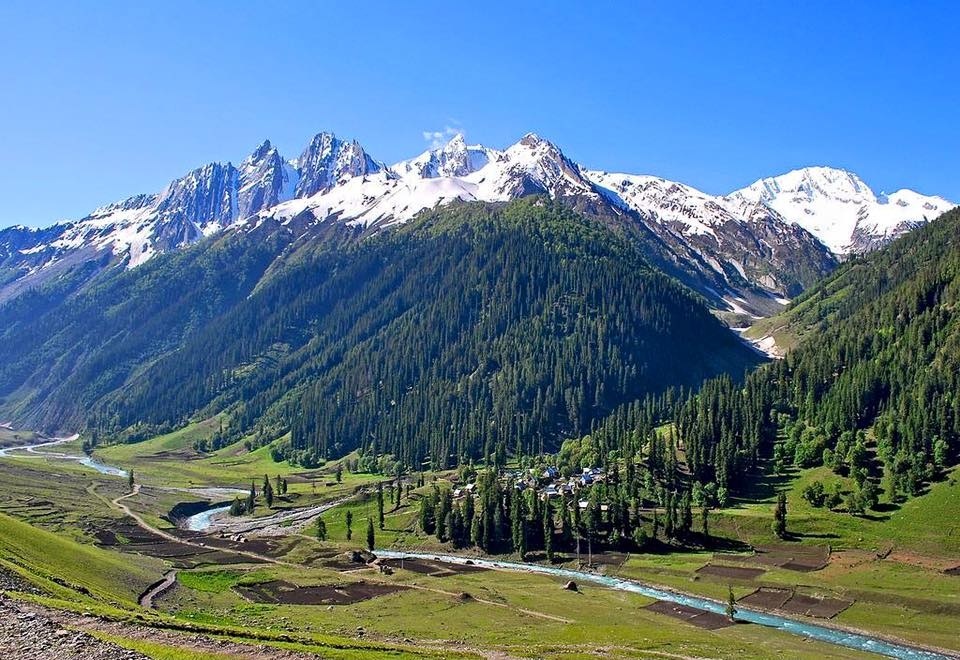
Sonamarg
The “Meadow of Gold” offers picturesque landscapes, glaciers, and trekking routes into the Himalayas.
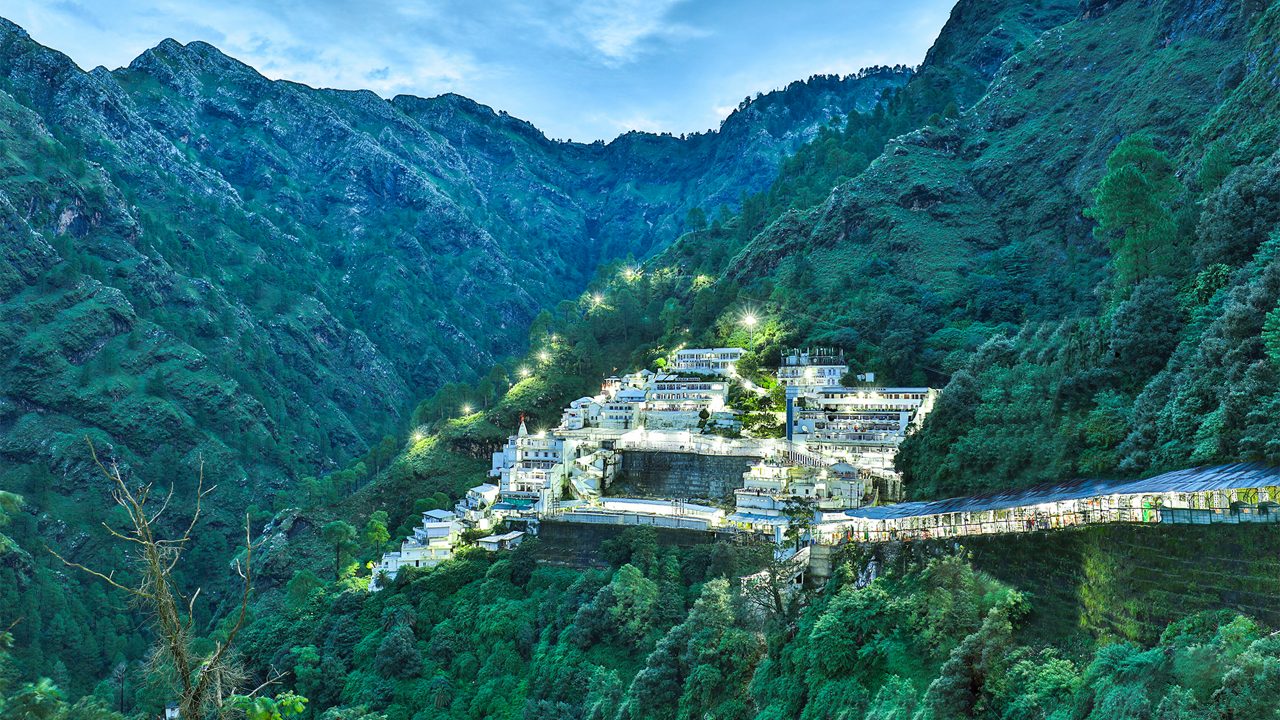
Vaishno Devi Temple, Katra
One of India’s holiest shrines, this temple attracts millions of devotees every year on a scenic uphill trek.
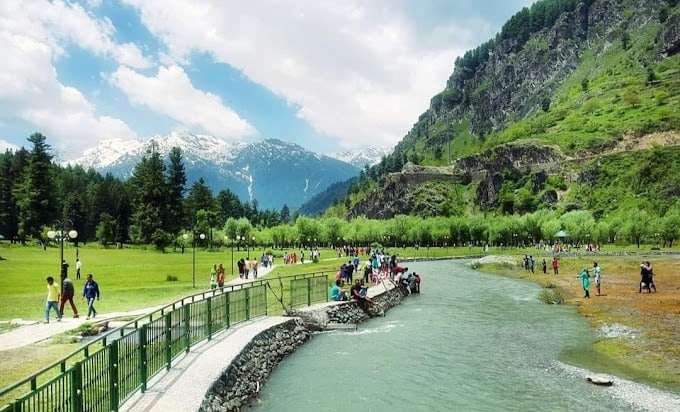
Betaab Valley
Surrounded by snowy mountains and pine trees, this valley near Pahalgam got its name from the Bollywood film Betaab.

Amarnath Cave Temple
A sacred cave temple of Lord Shiva, famous for the naturally formed ice lingam, a challenging mountain trek.
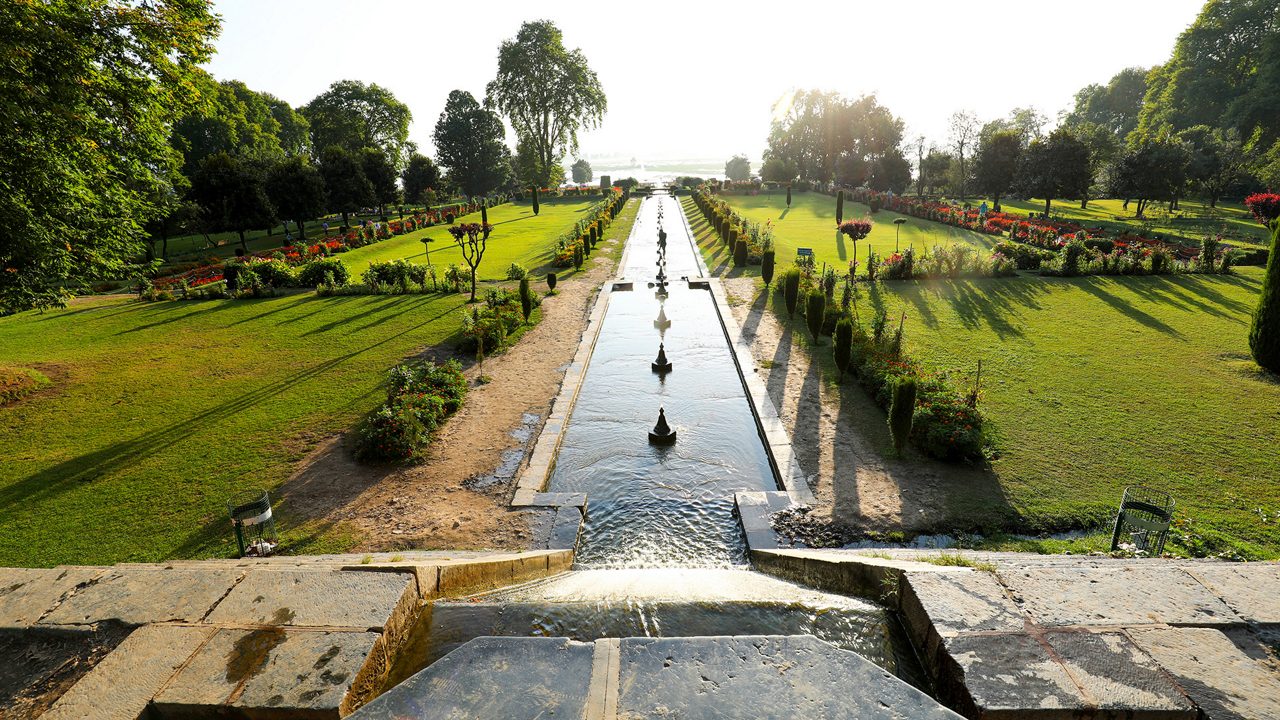
Nishat Bagh
Overlooking Dal Lake, this Mughal garden is known for its symmetrical layout and floral beauty.
Heritage of Jammu & Kashmir
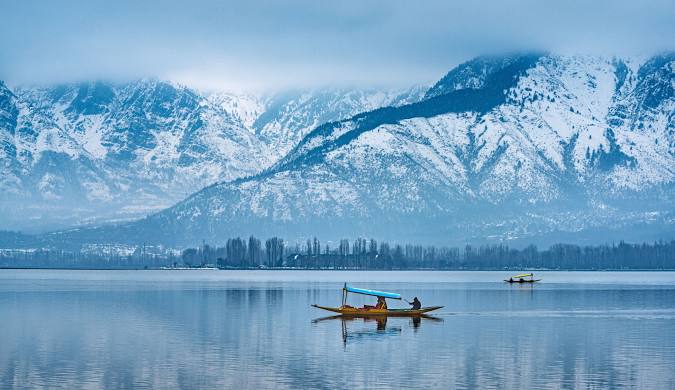
Boasts a rich and diverse heritage shaped by centuries of history, culture, and traditions. The region reflects a unique blend of Hindu, Buddhist, and Islamic influences seen in its architecture, art, and daily life. From the grand Mughal gardens and wooden mosques of Srinagar to ancient temples in Jammu and Ladakh’s Buddhist monasteries, the cultural depth is striking. Handicrafts like Pashmina shawls, Kashmiri carpets, and papier-mâché art preserve centuries-old craftsmanship, while traditional music, dance, and festivals celebrate the spirit and identity of its people.
The Performing Art of Jammu & Kashmir
Jammu & Kashmir’s performing arts showcase its cultural richness through folk music with instruments like santoor and rabab. Popular dances include the festive Chakri and graceful Rouf, while Ladakh is known for its spiritual mask dances performed in monasteries, preserving local traditions and stories.
Music forms of Jammu & Kashmir is a vibrant reflection of its cultural and spiritual heritage. Rooted in folk traditions and enriched by Sufi and classical influences, the music here uses unique instruments and melodic styles to tell stories, celebrate festivals, and express devotion. It forms an integral part of the region’s identity, bringing communities together through song and rhythm.
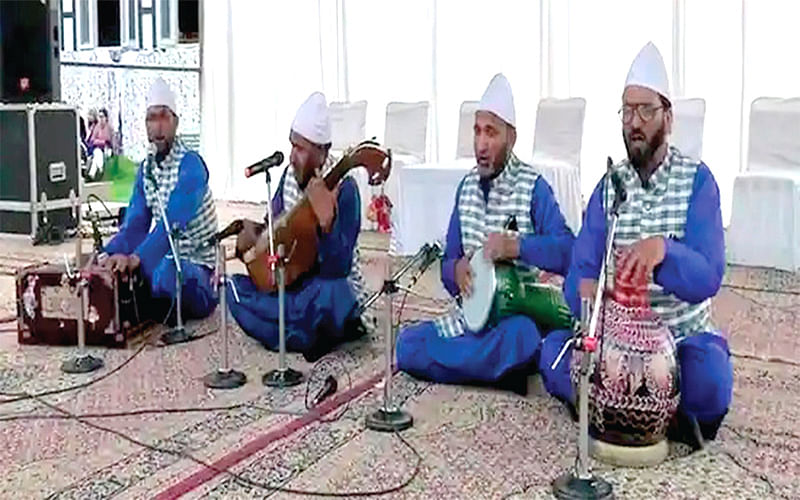
Chakri
Chakri is a lively folk music style featuring group singing and rhythmic tunes. It is commonly performed during festivals and social gatherings
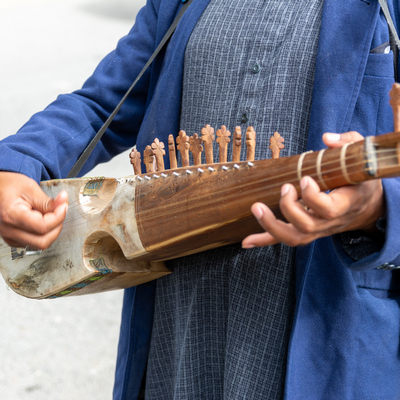
Henz
Henz is a melodic and soulful form of Kashmiri music, often sung solo with instrumental accompaniment. It reflects themes of nature, devotion, and emotion.
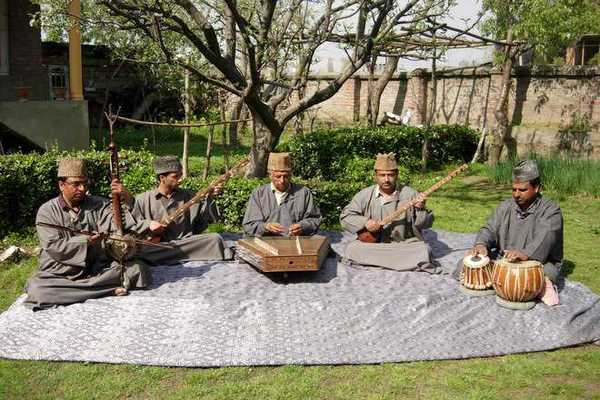
Wanvun
Wanvun is a traditional wedding song performed by women, celebrating marriage rituals with rhythmic chanting and harmonious vocals, fostering joy and togetherness.
Dance Form
The dance forms of Jammu & Kashmir beautifully express the region’s cultural diversity and traditions. These dances are often performed during festivals, weddings, and religious ceremonies, combining graceful movements with rhythmic music. They help preserve local stories and community bonds, showcasing the unique heritage of Jammu & Kashmir.
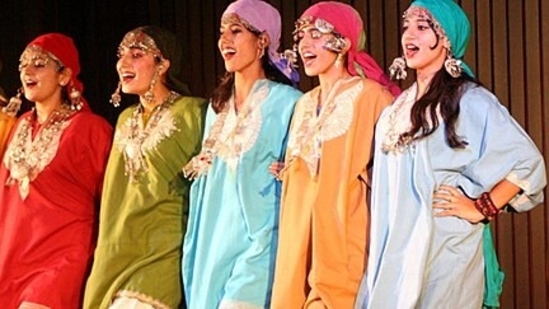
Rouf
: Rouf is a graceful folk dance performed mainly by women during festivals and celebrations. It features synchronized, flowing movements symbolizing joy and harmony.
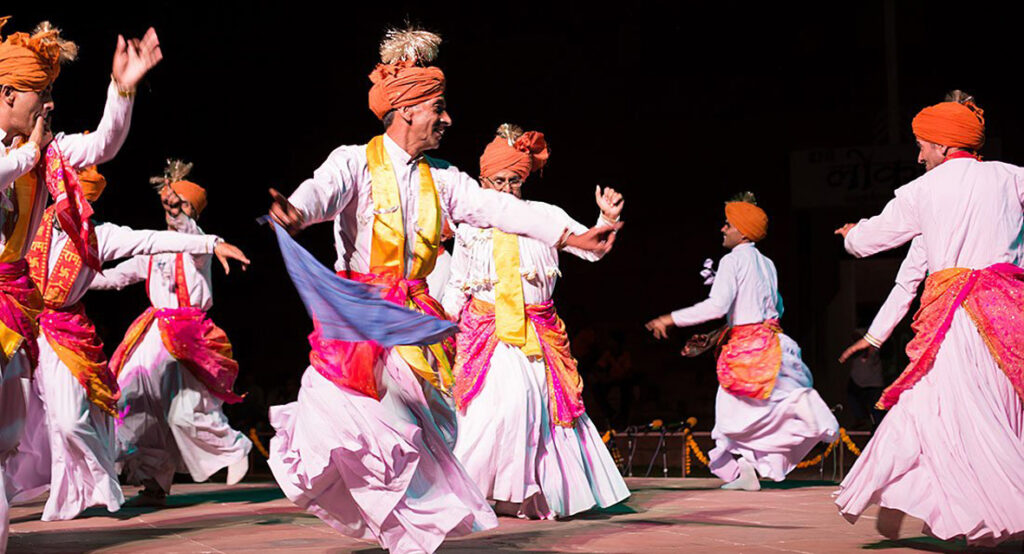
Chakri Dance
Chakri dance accompanies the Chakri singing style and is performed in groups with energetic steps and clapping. It is popular at social gatherings and festive occasions.
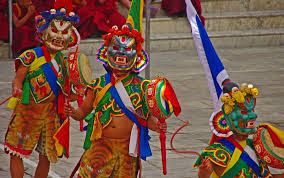
Mask Dance (Ladakh)
Mask Dance is a spiritual and theatrical performance held in monasteries. It combines elaborate costumes and storytelling to depict religious myths and folklore.
Others dance forms – Ladishah, Kud Dance, Band Pather, Jagar Dance, Rauf-e-Kashmir, Bhand Jashan
Festivals and Celebrations
Jammu & Kashmir celebrates a wide array of festivals that reflect its religious harmony, cultural richness, and traditional values. These festivals are marked by music, dance, food, and community gatherings, bringing people together in joy and devotion.
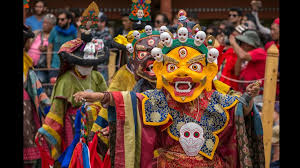
Hemis Festival
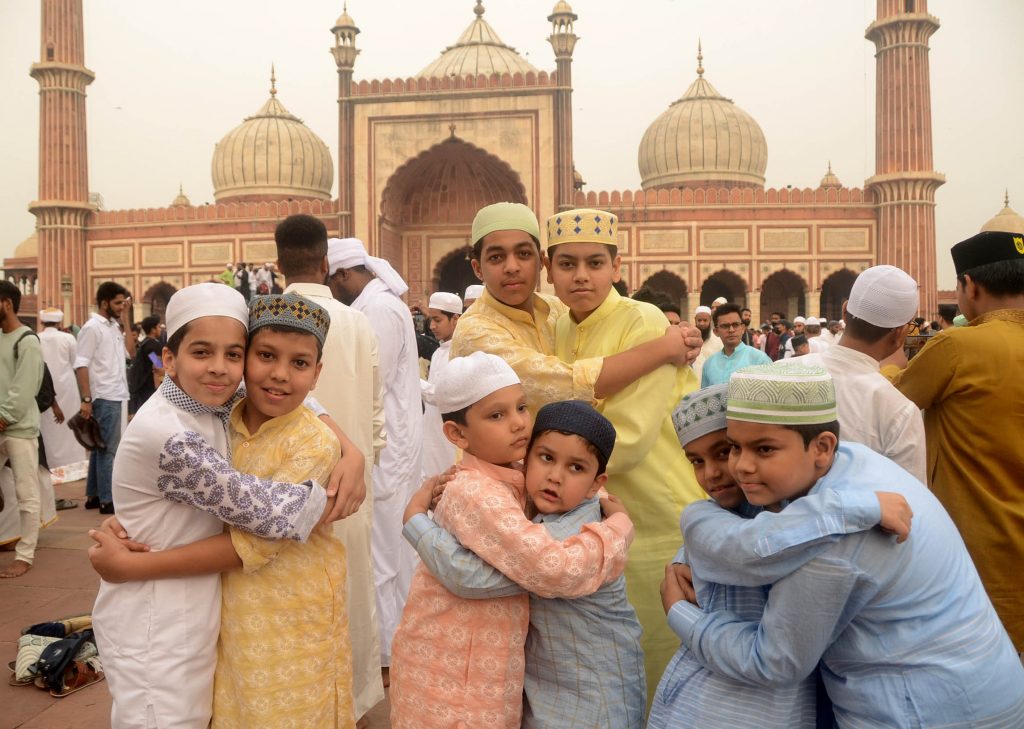
Eid-ul-Fitr
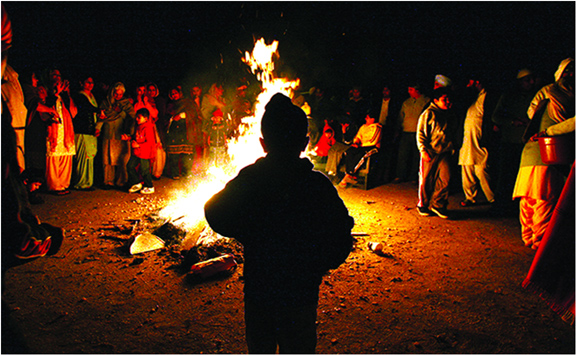
Lohri
Jammu & Kashmir's Cuisine
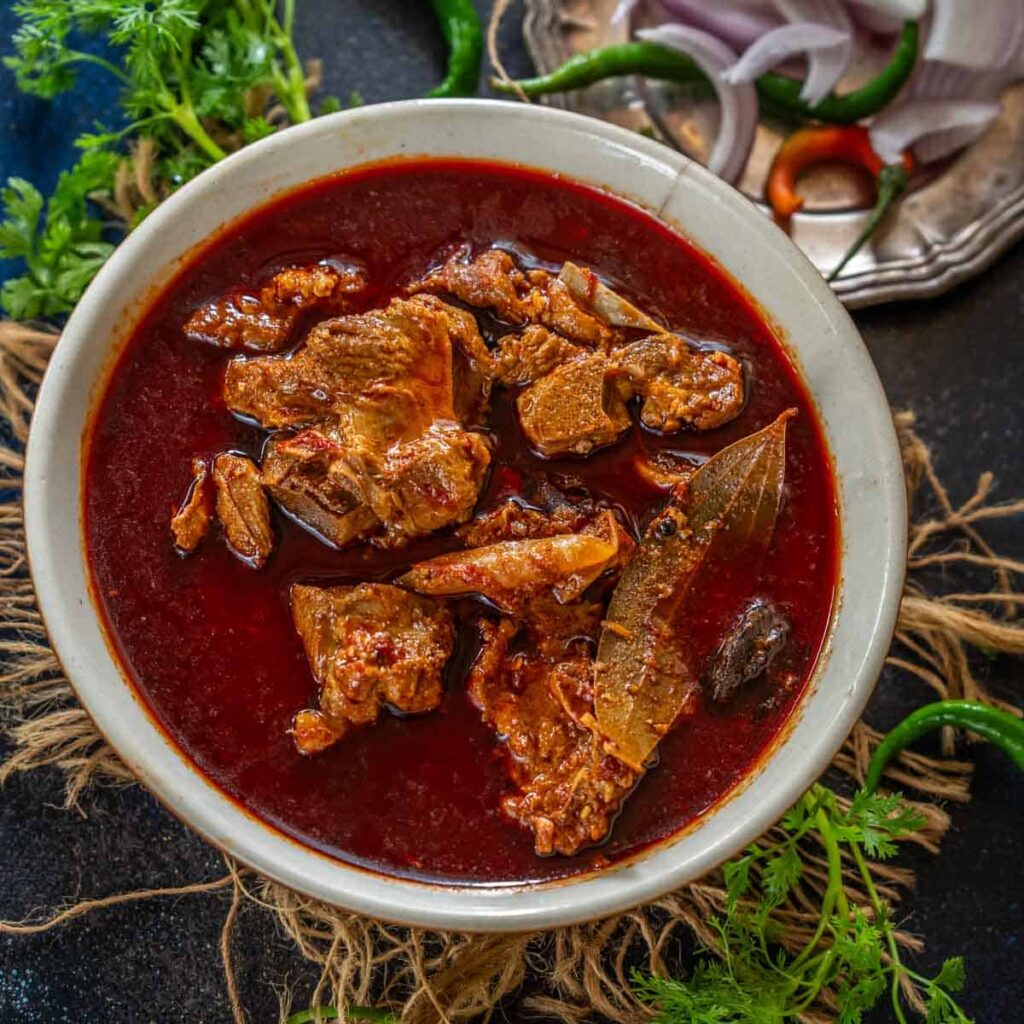
Rogan Josh
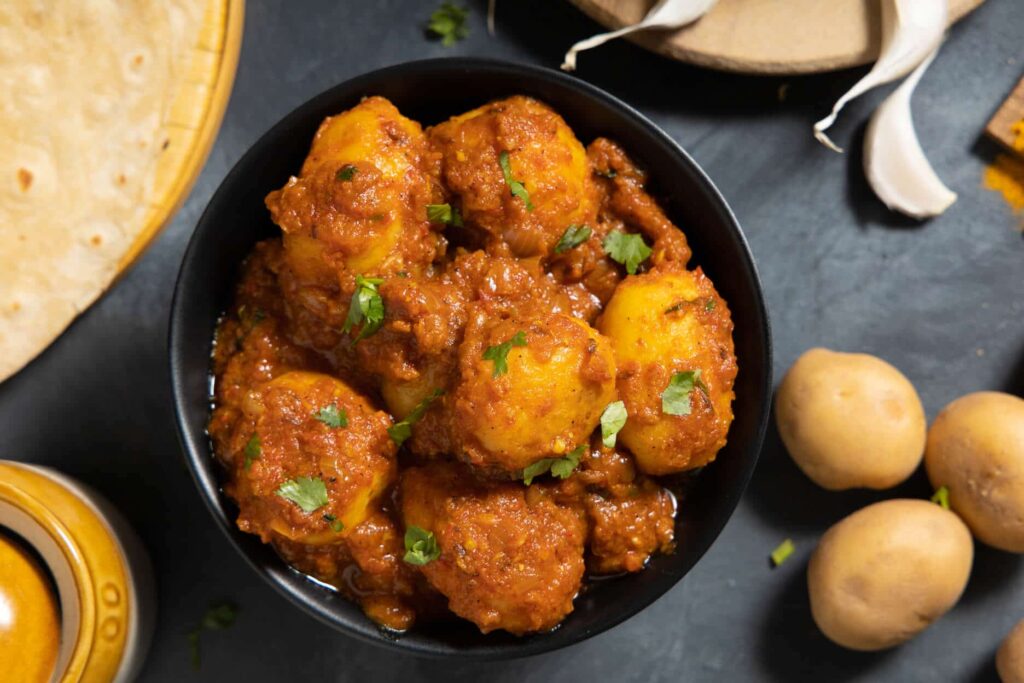
Dum Aloo
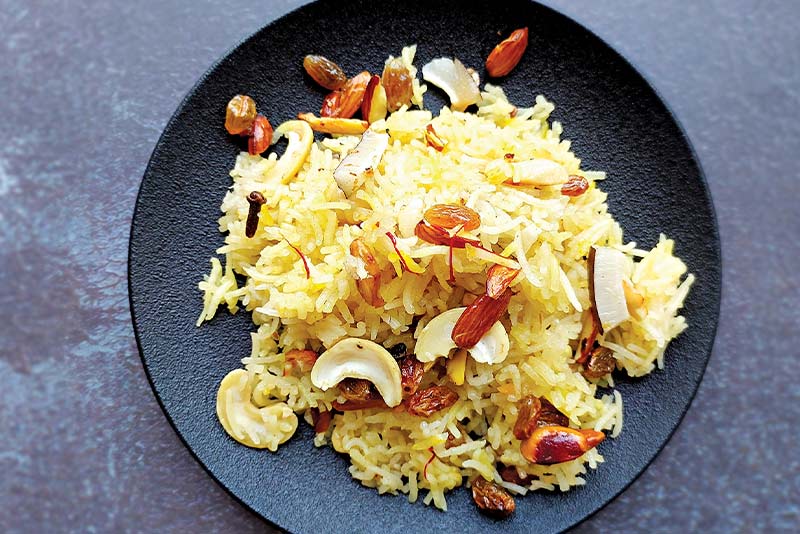
Modur Pulao
The cuisine of Jammu & Kashmir is a flavorful blend of rich spices, slow-cooked dishes, and regional ingredients.
- Rogan Josh – It’s a staple in Kashmiri Wazwan and loved for its rich, red color and tender meat.
- Dosa & Idli –Dum Aloo is a vegetarian delicacy made with baby potatoes cooked in spiced yogurt gravy.
- Modur – Served on special occasions, it balances rich sweetness with subtle spice.
- Gushtaba – Royal delicacy made of minced mutton meatballs cooked in a rich yogurt-based gravy.
- Kaladi Cheese – Kaladi is a traditional Dogra cheese from the Jammu region, often pan-fried until crispy on the outside and soft inside
Popular Shopping Items
Offers a variety of traditional and handcrafted items that reflect its rich culture and skilled artisanship.
- Pashmina Shawls – Famous for their warmth, elegance, and intricate hand embroidery.
Carpets – Luxurious hand-knotted carpets with detailed floral and geometric patterns.
Walnut Wood Carvings – Finely carved furniture and decor items made from local walnut wood.
Saffron – Premium quality saffron known for its rich aroma and flavor.
Best shopping places: Lal Chowk (Srinagar), Raghunath Bazaar (Jammu), and Government Arts Emporiums across the region.
Pashmina Shawls
Carpets
Walnut Wood Carvings
Saffron
Evolution of Jammu & Kashmir
⇒ Early Habitation: Evidence of human settlement in the Kashmir Valley dates back to around 3000 BCE, with Neolithic tools and dwellings discovered in Burzahom.
⇒ Ancient Texts & Epics: Mentioned in Mahabharata and Rajatarangini, an ancient historical chronicle written by Kalhana in the 12th century CE.
⇒ Religious Influences: Buddhism flourished under Emperor Ashoka, followed by the spread of Hinduism and later Islam in the 14th century.
⇒ Mughal & Afghan Rule: Mughals brought Persian culture and architecture; followed by Afghan Durrani and Sikh rule before the Dogra dynasty.
⇒ Integration into India: Acceded to India in 1947 after partition; underwent political shifts, including Article 370 revocation in 2019, making it a Union Territory.
Folk Dance of Jammu & Kashmir
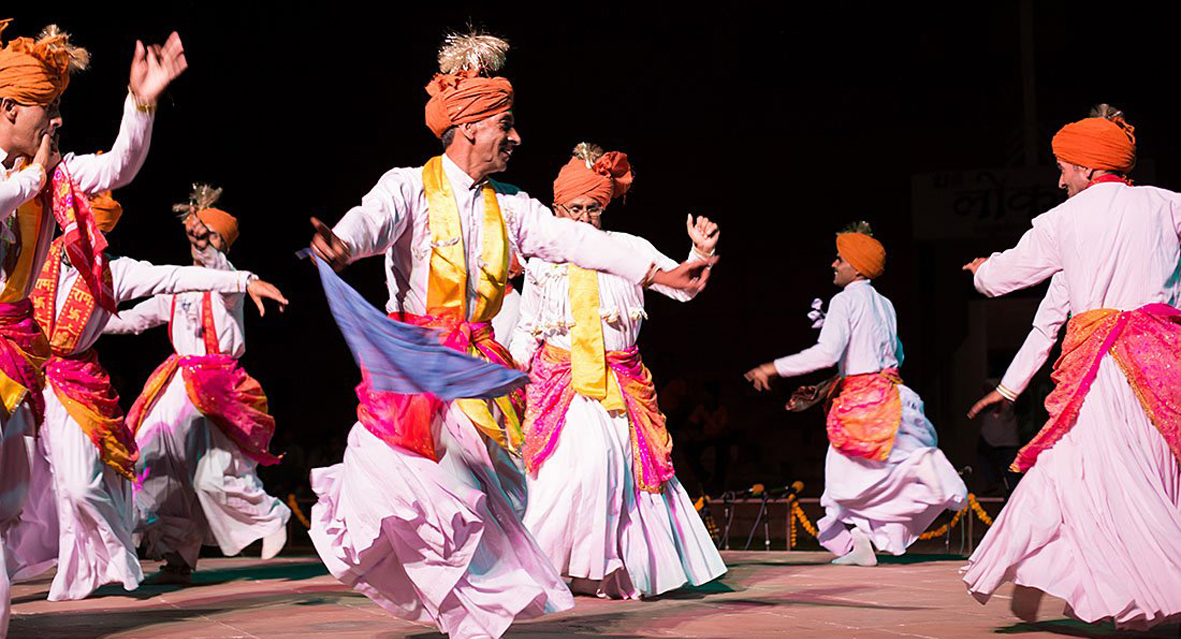
Jammu & Kashmir Blogs
- Jammu & Kashmir Cultural guide
- Places to visit in Jammu & Kashmir
- Places to visit in Jammu & Kashmir
- India’s most popular destination
- India’s archaeological marvels
Recommended articles
- Jammu & Kashmir Cultural guide
- Places to visit in Jammu & Kashmir
- Places to visit nearby Jammu & Kashmir
- India’s most popular destination
